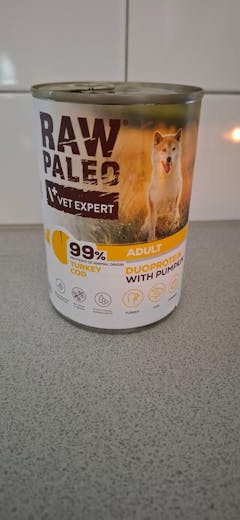
Mjölkersättning & Valpvälling: Livsviktig Näring för Valpens Första Steg
De första veckorna i en valps liv är en period av intensiv tillväxt och utveckling. Bröstmjölken från tiken är den absolut bästa näringen, men ibland uppstår situationer där valparna behöver extra stöd. Då är mjölkersättning och valpvälling livräddande och nödvändiga komplement. På Zoostar.se hittar du högkvalitativa produkter som säkerställer att din valp får den näring den behöver för en stark och frisk start i livet.
Mjölkersättning för Valpar: När Livet Hänger på Ett Dropp
Mjölkersättning är en komplett näringskälla, speciellt framtagen för att efterlikna tikmjölkens näringsprofil. Den är avsedd för valpar från födseln och upp till cirka 3-4 veckors ålder.
När Behövs Mjölkersättning?
- **Föräldralösa valpar:** Om valpkullen blivit övergiven, mamman gått bort, eller om hon inte kan ta hand om sina valpar.
- **Otillräcklig mjölkproduktion:** Tiken kan ha för lite mjölk, särskilt vid stora kullar, stress eller sjukdom. Mjölkersättning ges då som ett komplement.
- **Sjuk mamma-tik:** Om tiken är sjuk och medicineras med preparat som kan skada valparna, eller om hon själv är för sjuk för att amma.
- **Svaga eller små valpar:** Valpar som inte ökar i vikt som de ska, eller är särskilt små, kan behöva extra näring via mjölkersättning.
**Viktigt att tänka på vid beredning och utfodring:**
- **Hygien:** Sterilisera alltid flaskor, nappar och annan utrustning noggrant.
- **Temperatur:** Värm ersättningen till kroppstemperatur (cirka 37-38°C). Använd aldrig mikrovågsugn.
- **Utförande:** Mata valpen liggande på mage. Stimulera urinering och avföring genom att försiktigt massera valpens mage och analområde med en varm, fuktig trasa efter varje matning.
Valpvälling: Steget Mellan Mjölk och Fast Föda
Valpvälling är ett halvfast, näringsrikt övergångsfoder som introduceras när valparna börjar avvänjas från mjölk, vanligtvis från cirka 3-4 veckors ålder. Det förbereder valparnas matsmältningssystem för fast föda och hjälper dem att lära sig äta från skål.
När Börjar Man med Valpvälling?
Valpar är redo för valpvälling när:
- De är runt 3-4 veckor gamla.
- Mjölktänderna börjar bryta igenom.
- De visar intresse för moderns mat eller matskålar.
**Så introducerar du valpvälling:**
- **Börja löst:** Starta med en mycket lös, soppliknande konsistens och öka gradvis tjockleken över tid genom att minska vätskan.
- **Servering:** Använd en låg skål så att valparna lätt kan slicka i sig vällingen.
- **Gradvis övergång:** Successivt övergår man från välling till uppblött valptorrFoder, och sedan till torrt valpfoder. Hela avvänjningsprocessen brukar vara klar runt 6-8 veckors ålder.
Skillnaden Mellan Mjölkersättning och Valpvälling
Det är viktigt att förstå att mjölkersättning och valpvälling har olika funktioner:
- **Mjölkersättning:** Är en primär, komplett näringskälla i flytande form, avsedd att ersätta eller komplettera modersmjölken för de allra yngsta valparna (0-3/4 veckor).
- **Valpvälling:** Är ett övergångsfoder i halvfast/grötform, avsett att vänja valparna (från 3-4 veckor) vid fast föda och förbereda deras matsmältningssystem för ett mer varierat hundmat.
På Zoostar.se har vi noggrant valt ut produkter som stödjer valpars hälsa i varje steg. Utöver mjölkersättning och valpvälling hittar du vårt fulla sortiment av hundmat och foder, inklusive valpfoder, torrfoder för hundar, våtfoder för hundar, veterinärfoder till hund, foder för äldre hundar och spannmålsfritt hundfoder. Vi har även ett stort utbud av hundgodis och tuggbitar för belöning och stimulans.
Ge din valp den bästa möjliga starten i livet med rätt näring från Zoostar.se!
Vanliga frågor om Mjölkersättning & Valpvälling
Här besvarar vi några av de mest frekventa frågorna vi får angående mjölkersättning och valpvälling.
När behöver valpar mjölkersättning och hur förbereder man den?
Mjölkersättning för valpar är en livsviktig produkt som används när en valp av olika anledningar inte kan få tillräckligt med bröstmjölk från sin mamma. Den är speciellt framtagen för att efterlikna tikmjölkens näringsprofil så nära som möjligt, och är avgörande för valpens överlevnad och sunda utveckling i dessa fall. När behövs mjölkersättning? Det finns flera scenarier där mjölkersättning är nödvändig: 1. Föräldralösa valpar: Om valpkullen blivit övergiven, mamman gått bort, eller om hon inte kan ta hand om sina valpar. 2. Otillräcklig mjölkproduktion: Tiken kan ha för lite mjölk, antingen på grund av sjukdom, stress, undernäring eller att hon helt enkelt inte producerar tillräckligt för en stor kull. I dessa fall kan mjölkersättning ges som ett komplement till bröstmjölken. 3. Mamma-tikens sjukdom: Om tiken är sjuk och medicineras med preparat som kan skada valparna, eller om hon själv är för sjuk för att amma. 4. Avvisning av valpar: Om tiken av någon anledning avvisar en eller flera valpar. 5. Svaga eller små valpar: Valpar som är svaga, mycket små eller inte ökar i vikt som de ska, kan behöva extra näring via mjölkersättning, även om tiken ammar. Detta säkerställer att de får i sig tillräckligt med energi för att växa och utvecklas. Hur förbereder man mjölkersättning? Att förbereda mjölkersättning korrekt är avgörande för valpens hälsa. Felaktig blandning kan leda till magbesvär eller brist på näringsämnen. Följ alltid tillverkarens instruktioner noggrant, men här är en allmän guide: 1. Sterilisera utrustning: All utrustning (flaskor, nappar, blandningsskålar, vispar) måste vara noggrant rengjord och steriliserad för att förhindra bakterieinfektioner. Koka dem i vatten i minst 5 minuter före varje användning, eller använd en steriliseringslösning. 2. Vattenkvalitet: Använd kokat och avkylt vatten, eller sterilt vatten (som säljs i butik för just detta ändamål). Kranvatten kan innehålla bakterier som är skadliga för nyfödda valpar. 3. Mäta noggrant: Mät upp pulver och vatten exakt enligt instruktionerna på förpackningen. Använd gärna en köksvåg för att väga pulvret för högsta precision om anvisningarna anger vikt. 4. Blanda noga: Blanda pulvret med vattnet tills det är helt upplöst och inga klumpar finns kvar. Använd en visp eller skaka ordentligt i en tät behållare. 5. Temperatur: Värm mjölkersättningen till kroppstemperatur, cirka 37-38°C. Detta kan göras i ett vattenbad. Testa temperaturen på din handled – det ska kännas varken varmt eller kallt. Använd aldrig mikrovågsugn, då detta kan skapa hotspots som bränner valpens mun. 6. Portionera och förvara: Blanda bara den mängd som behövs för en matning om inte tillverkaren anger något annat. Överbliven, blandad ersättning måste förvaras i kylskåp och kasseras efter 24 timmar (eller enligt tillverkarens anvisningar). Mata aldrig valparna med kall ersättning. Att mata valpen: Valpar bör matas liggande på mage, aldrig på rygg, för att förhindra att mjölken hamnar i lungorna. Se till att napphålet inte är för stort (så att mjölken flödar för snabbt) eller för litet (så att valpen blir frustrerad och inte får i sig tillräckligt). Efter varje matning, massera försiktigt valpens mage och analområde med en varm, fuktig trasa för att stimulera urinering och avföring – en funktion som normalt stimuleras av tiken. På Zoostar.se har vi ett urval av mjölkersättning och valpvälling av hög kvalitet, samt lämpliga flaskor och nappar för valpmatning.
Vad är valpvälling och när ska man börja ge det?
Valpvälling är en halvfast, näringsrik välling som fungerar som ett övergångsfoder för valpar när de börjar avvänjas från mjölk (antingen modersmjölk eller mjölkersättning) och gradvis introduceras till fast föda. Det är en viktig del i processen att övergå till torrfoder eller våtfoder. Vad är valpvälling? Valpvälling består oftast av finmalt torrfoder för valpar, blandat med varmt vatten eller mjölkersättning för att skapa en lättsmält, grötliknande konsistens. Det är formulerat för att vara näringsmässigt komplett för den växande valpen och lätt att inta för de små munnarna. När ska man börja ge valpvälling? Valpar börjar vanligtvis äta valpvälling när de är mellan 3-4 veckor gamla. Vid denna ålder börjar deras mjölktänder bryta igenom, och tiken kan börja visa tecken på att vilja avvänja dem (t.ex. genom att inte ligga lika mycket med dem eller morra lite om de försöker dia för länge). Detta är den naturliga tidpunkten att introducera fast föda. Tecken på att det är dags: - Valparna är cirka 3-4 veckor gamla. - De börjar få mjölktänder. - De visar intresse för moderns mat. - De kan gå och utforska lite mer självständigt. Hur introducerar man valpvälling? 1. Börja gradvis: Initialt bör valpvällingen vara mycket lös, nästan soppliknande. Du kan börja med att erbjuda den i en låg skål eller fat, så att valparna kan slicka i sig den. 2. Konsistens: Över tid kan du gradvis göra vällingen tjockare genom att minska mängden vätska och öka mängden torrfoderpulver. Målet är att successivt övergå till en konsistens som liknar uppblött torrfoder, och sedan slutligen till helt torrt valpfoder. 3. Antal måltider: Börja med 2-3 små måltider per dag, och öka gradvis antalet och mängden i takt med att valparna accepterar fodret och minskar sitt diande. 4. Renlighet: Var noga med hygienen. Byt ut maten ofta så att den inte blir dålig och tvätta matskålen noggrant efter varje måltid. Valpar kan bli ganska kladdiga när de äter välling, så håll deras matplats ren. Fördelar med valpvälling: - Ger extra näring: Särskilt viktigt för stora kullar eller valpar som behöver extra tillväxtstöd. - Förbereder för fast föda: Lär valparna att äta från skål och vänjer dem vid nya konsistenser och smaker. - Avlastar tiken: Ger tiken en paus från digivningen, vilket är särskilt viktigt om hon har en stor kull eller är sliten. Övergång till torrfoder: Efter valpvällingen övergår valparna till uppblött torrfoder och sedan successivt till torrt valpfoder. Denna process brukar vara klar när valparna är cirka 6-8 veckor gamla, vilket sammanfaller med tiden då de vanligtvis är redo att flytta till sina nya hem. På Zoostar.se hittar du färdiga valpvällingar och valpfoder som är perfekta för övergången till fast föda, samt mjölkersättning för de allra yngsta.
Hur skiljer sig mjölkersättning och valpvälling från varandra?
Även om både mjölkersättning och valpvälling är avsedda för valpar och spelar en kritisk roll i deras tidiga näring, har de helt olika syften och används under olika stadier av valpens utveckling. Att förstå skillnaden är avgörande för att ge valpen rätt näring vid rätt tidpunkt. Mjölkersättning (Puppy Milk Replacer): - Syfte: Mjölkersättning är avsedd att helt eller delvis ersätta modersmjölken. Dess primära funktion är att ge fullständig näring till valpar som inte kan dia från tiken, eller när tikens mjölkproduktion är otillräcklig. - Målgrupp: Nyfödda valpar, vanligtvis från födseln upp till 3-4 veckors ålder. - Konsistens: Flytande, som mjölk. Den matas med nappflaska eller spruta. - Näringsprofil: Noggrant formulerad för att efterlikna tikmjölkens sammansättning med högt innehåll av fett, protein, laktos, vitaminer och mineraler för snabb tillväxt och utveckling av valparnas inre organ och immunförsvar. - Användning: Nödfoder för föräldralösa valpar, komplement vid stor kull eller sjuk tik, eller för svaga valpar som behöver extra näring. - Exempel på användningsfall: En kull vars mamma har gått bort, eller en valp som är den minsta i kullen och inte får tillräckligt med mjölk. Valpvälling (Puppy Gruel/Weaning Food): - Syfte: Valpvälling är ett övergångsfoder som introducerar valpar till fast föda under avvänjningsperioden. Den hjälper valparna att gradvis anpassa sig från en flytande kost (mjölk) till en fast kost (torrfoder/våtfoder). - Målgrupp: Valpar som är mellan 3-4 veckor gamla och uppåt, när de börjar få mjölktänder och visar intresse för annan mat. - Konsistens: Halvfast, som en gröt eller puré. Den serveras i en låg skål. - Näringsprofil: Fortfarande näringstät och anpassad för valpars tillväxt, men med lägre fett- och laktosinnehåll än mjölkersättning. Den innehåller en högre andel kolhydrater och fibrer från fasta ingredienser, liknande torrfoder men i en mer lättsmält form. - Användning: För att underlätta avvänjningsprocessen och förbereda valparnas matsmältningssystem för torrfoder. - Exempel på användningsfall: Valpar som är redo att börja äta annat än bara mjölk och ska tränas att äta från skål. De viktigaste skillnaderna sammanfattade: - Ålder: Mjölkersättning för nyfödda (0-3/4 veckor); Valpvälling för äldre valpar (3-4 veckor och uppåt). - Konsistens: Mjölkersättning är flytande; Valpvälling är halvfast/grötliknande. - Syfte: Mjölkersättning är en primär näringskälla som ersätter mjölk; Valpvälling är ett övergångsfoder till fast föda. I många fall kommer valparna först att behöva mjölkersättning (om de inte kan dia sin mamma), och sedan går de över till valpvälling när de är redo för fastare föda. Efter vällingen är nästa steg att introducera uppblött valptorrFoder, och sedan gradvis torrt foder. På Zoostar.se hittar du både mjölkersättning och valpvälling för att stödja valparnas utveckling under dessa kritiska stadier.
Husdjursprodukter Online
Utforska fler populära hundkategorier
Här hittar du många av våra mest efterfrågade kategorier – från hundfoder och godis till tillbehör, vård och aktivering.
Ledande Fodertillverkare
Populära hundfodermärken
Här hittar du våra mest populära hundfoder – från spannmålsfritt till veterinärfoder. Klicka på ett varumärke för att se hela sortimentet.






